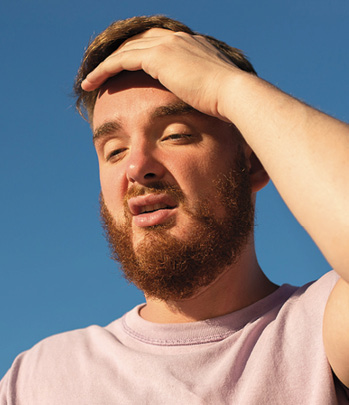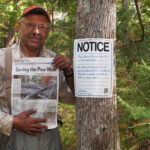The North Shore has famously cool summers, but that doesn’t mean we never have to worry about the heat. While anyone can experience heat-related illness, there are risk factors that increase the likelihood:
- Age. The nervous systems of young children and adults over 65 are less able to cope with changes in body temperature. They can have difficulty sensing the degree to which they’re overheated or thirsty and may have difficulty remaining hydrated. Older adults don’t sweat as efficiently and are more likely to have chronic medical conditions that impact the way their bodies respond to heat.
- Sudden exposure to warmer temperatures. We may have cold weather living down to a science, but we aren’t acclimated to heat. It can take several weeks of exposure to hot weather before a person adjusts. Additionally, what’s considered “hot” is relative. If the temperatures are above normal for you, it pays to be cautious.
- Lack of air conditioning. AC’s not only cool down the air, but they also remove humidity. This allows sweat to evaporate and the body to cool off.
- Certain medications. When temperatures start to rise, be careful if you take medication to:
- narrow blood vessels (vasoconstrictors),
- block adrenaline and lower blood pressure (beta blockers),
- help your body to get rid of sodium and water (diuretics),
- act as a stimulant (for ADHD),
- reduce psychiatric symptoms (antidepressants or antipsychotics).
Heat-related illnesses can range in severity from aggravating to deadly.
- Heat rash (prickly heat) is a skin irritation caused by sweat that can’t evaporate. It looks like clusters of red bumps and commonly appears on the neck, upper chest, and folds of skin.
- Heat cramps are caused when electrolytes and fluid are lost through sweat. Resting in a shady, cool area, and having a drink (a sports drink will help replace lost electrolytes) will help cramps to dissipate.
- Heat exhaustion happens when someone can’t rid their body of excess heat. Their core temperature and heart rate start to increase. As the illness progresses, the person may begin to feel confused, tired, irritable, lightheaded, or dizzy. They may sweat heavily, feel thirsty and nauseous, and should cool off as quickly as possible: get to a shady, cool area, remove excess clothing, wipe down with a cool, damp cloth, and drink a cool sports beverage or water.
- Heat stroke is the most severe and dangerous type of heat-related illness. It is always considered a medical emergency. Watch out for rapid heart rate and breathing, very high body temperature (104 F / 40 C or higher), heavy sweating or skin that’s hot and dry, confusion, slurred speech, headache, seizures, or unconsciousness. Untreated heat stroke can quickly damage the brain, heart, kidneys, and muscles. When these symptoms are present, call 911 immediately and cool the person as quickly as possible: a cool shower, misting with a water hose and fanning, or ice packs on the neck, armpits, and groin, and drinking a sports beverage or water.
Thankfully, heat-related illnesses can be prevented.
-
- Wear clothing that’s lightweight, loose, and light-colored.
- Avoid sunburns. It’s not only painful and damaging to the skin but also impedes the body’s ability to cool itself. Wear a wide-brimmed hat and use sunscreen.
- Stay hydrated by drinking water frequently. Older people often have impaired thirst response and may need water even if they don’t feel thirsty. The color of urine can be an easy-to-check indicator of hydration. Unless someone is taking medication or supplements that change the color, urine should be clear to pale yellow. If it’s darker than that, have some water.
- Never leave anyone in a parked car, even in the shade with the windows cracked. This is a common cause of heat-related deaths in children. When parked in the sun, the temperature in a car can jump 20 degrees F (more than 11 degrees C) in only 10 minutes.
- Buddy-up! Confusion can accompany early heat stress, and that makes a person unaware that they are getting overheated. A buddy can help spot heat stress indicators (fatigue, dizziness, confusion) before they get serious.
- Chill out during the hottest part of the day. If possible, take it easy. If you must be active, drink fluids and rest frequently in the shade.
Remember, pets can suffer heat-related illnesses too. Provide them with a shady place to cool off, plenty of clean water to drink, and never leave them in the car.
For more information, check out the following resources:
mayoclinic.org/diseases-conditions/heat-stroke/symptoms-causes/syc-20353581
hms.harvard.edu/magazine/aging/effects-heat-older-adults
verywellfamily.com/heat-stroke-signs-and-symptoms-in-kids-5295698






